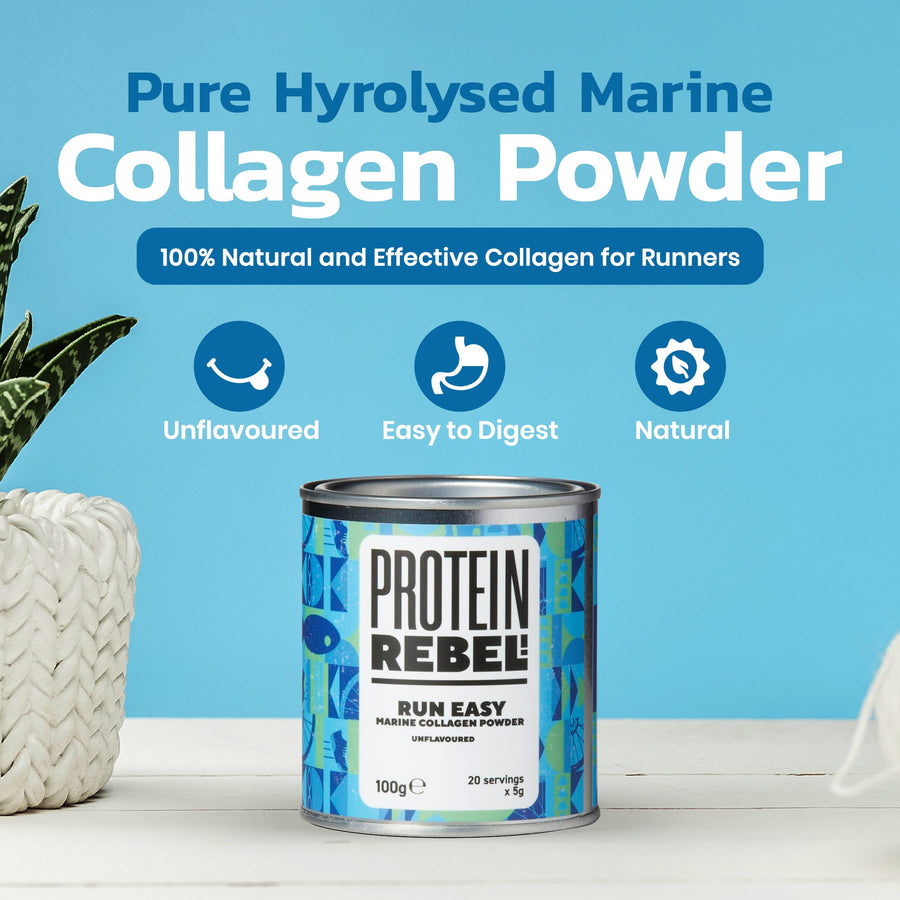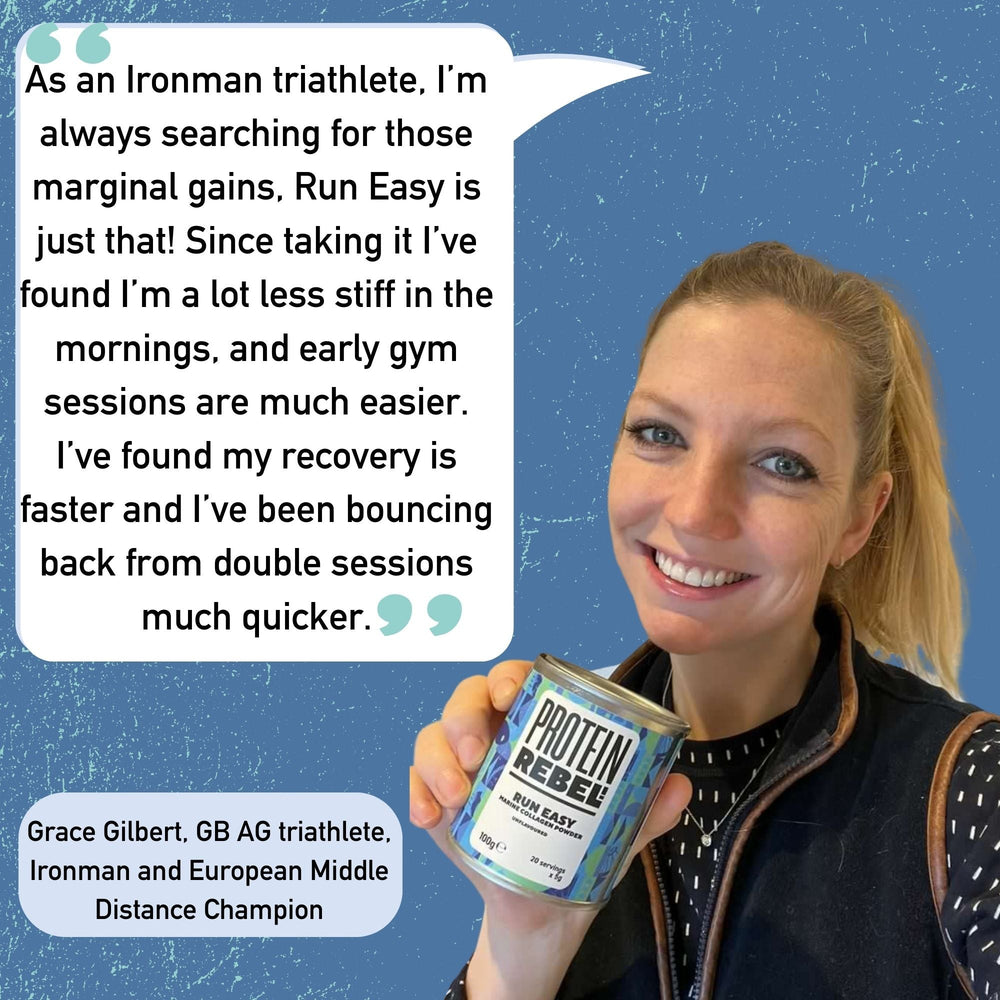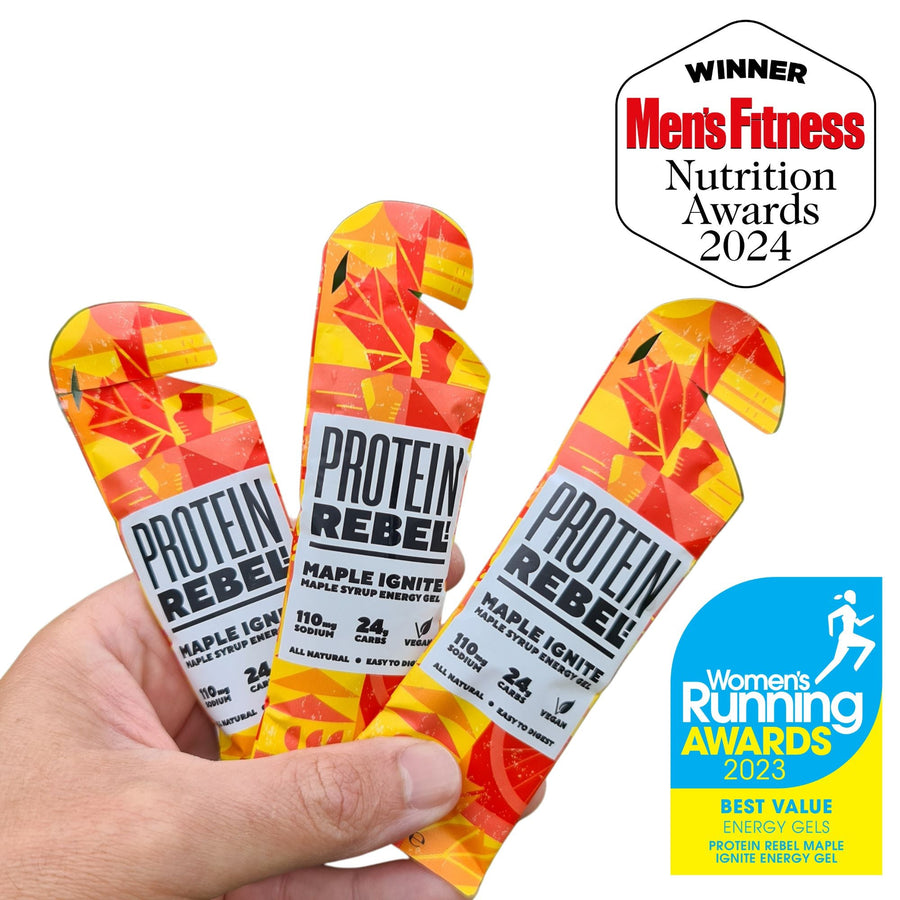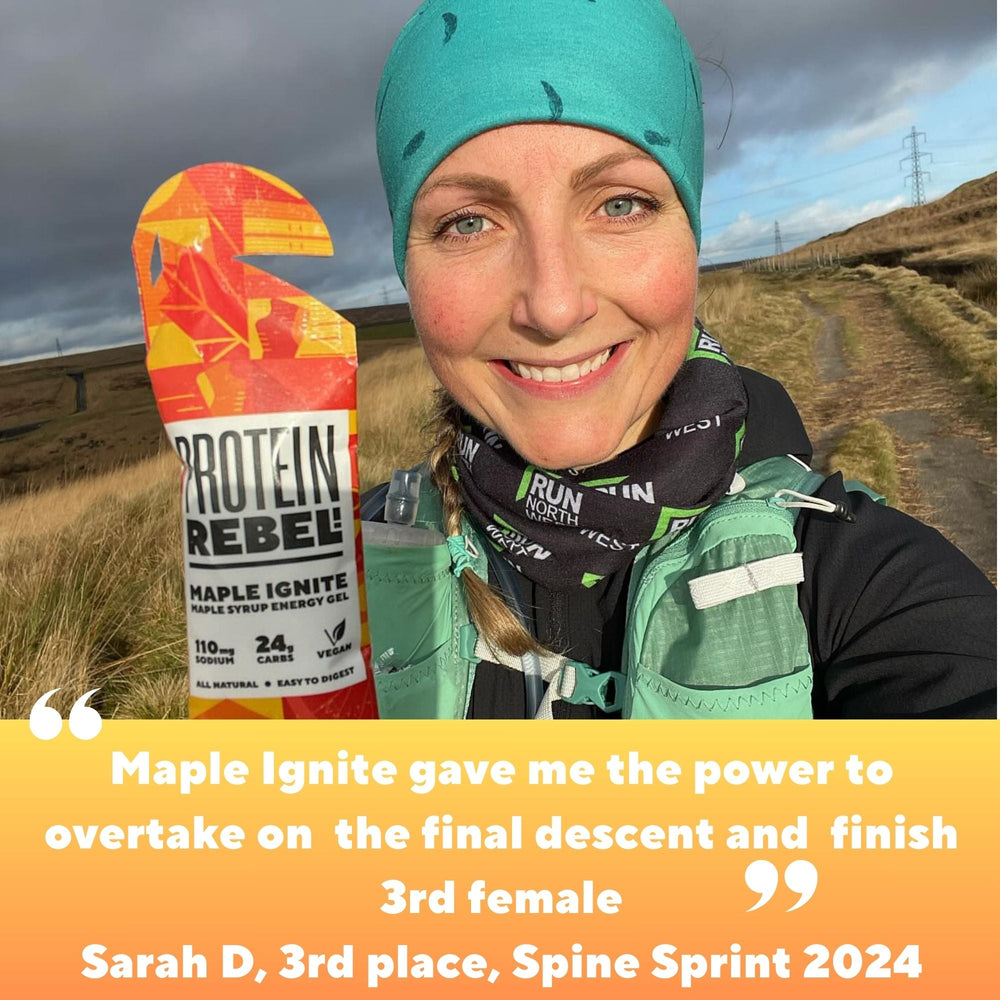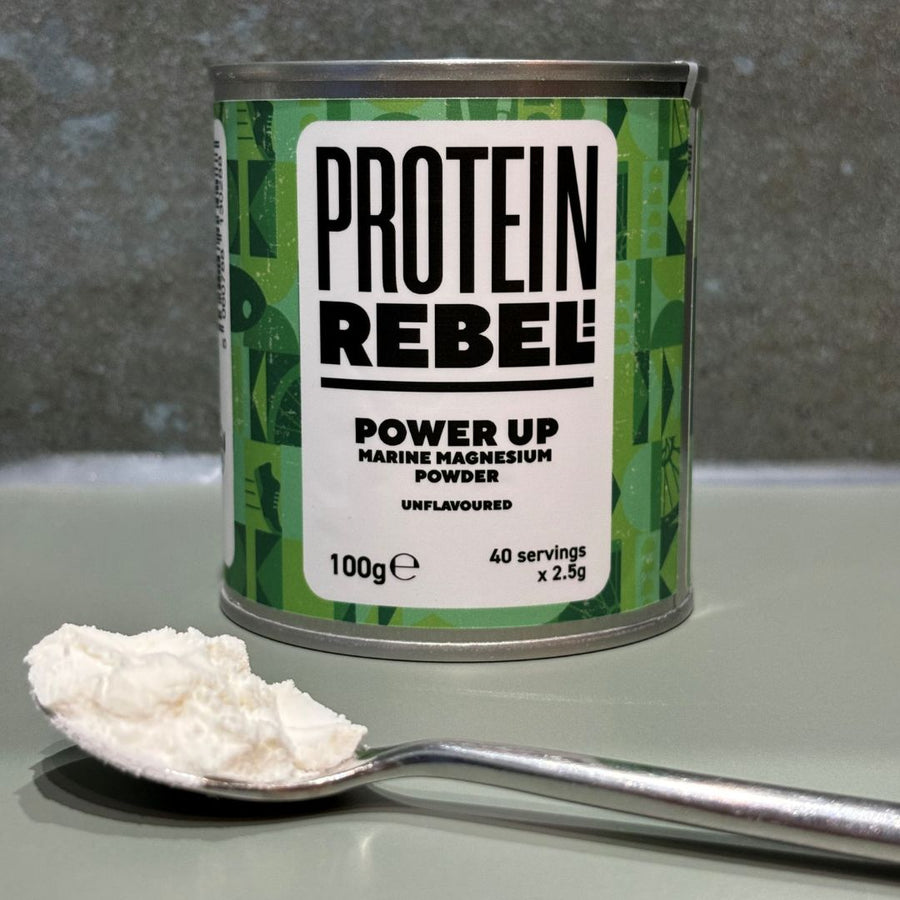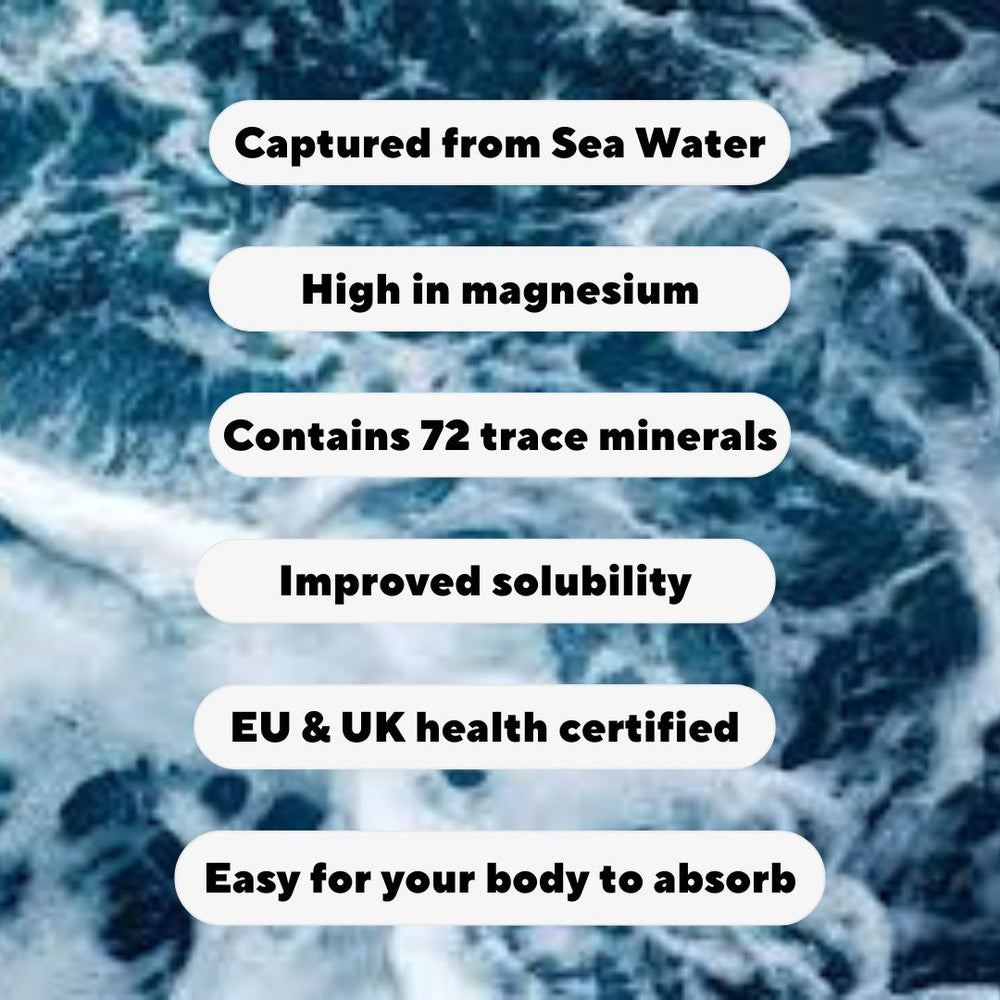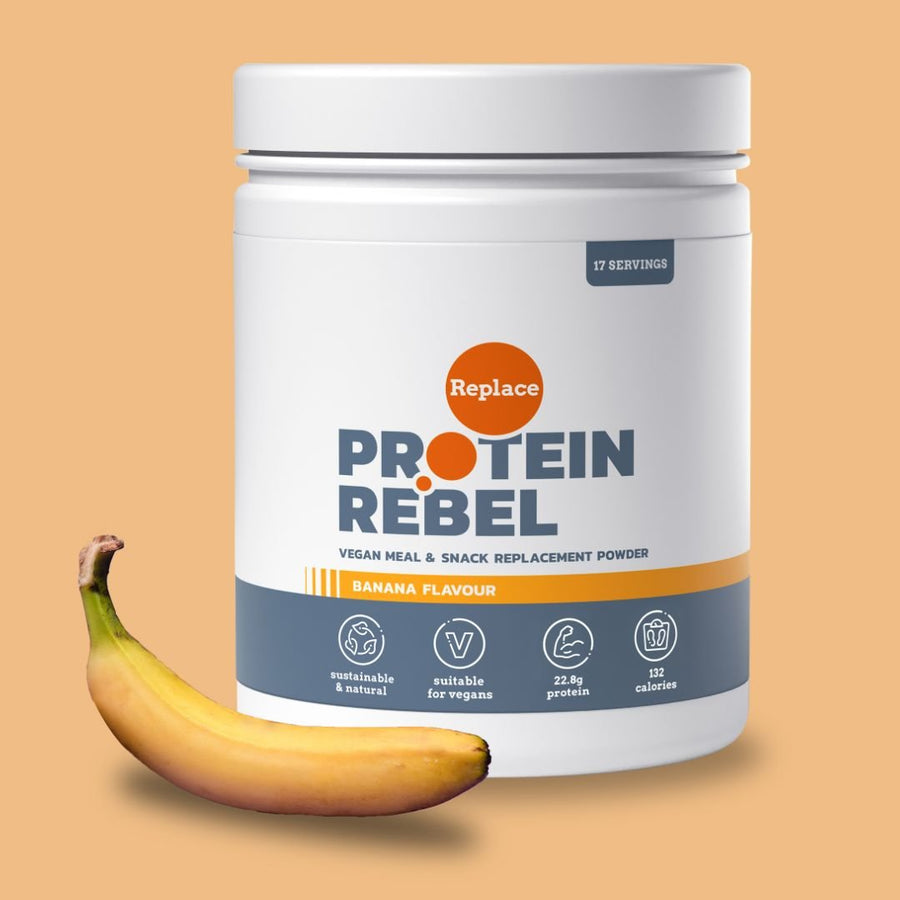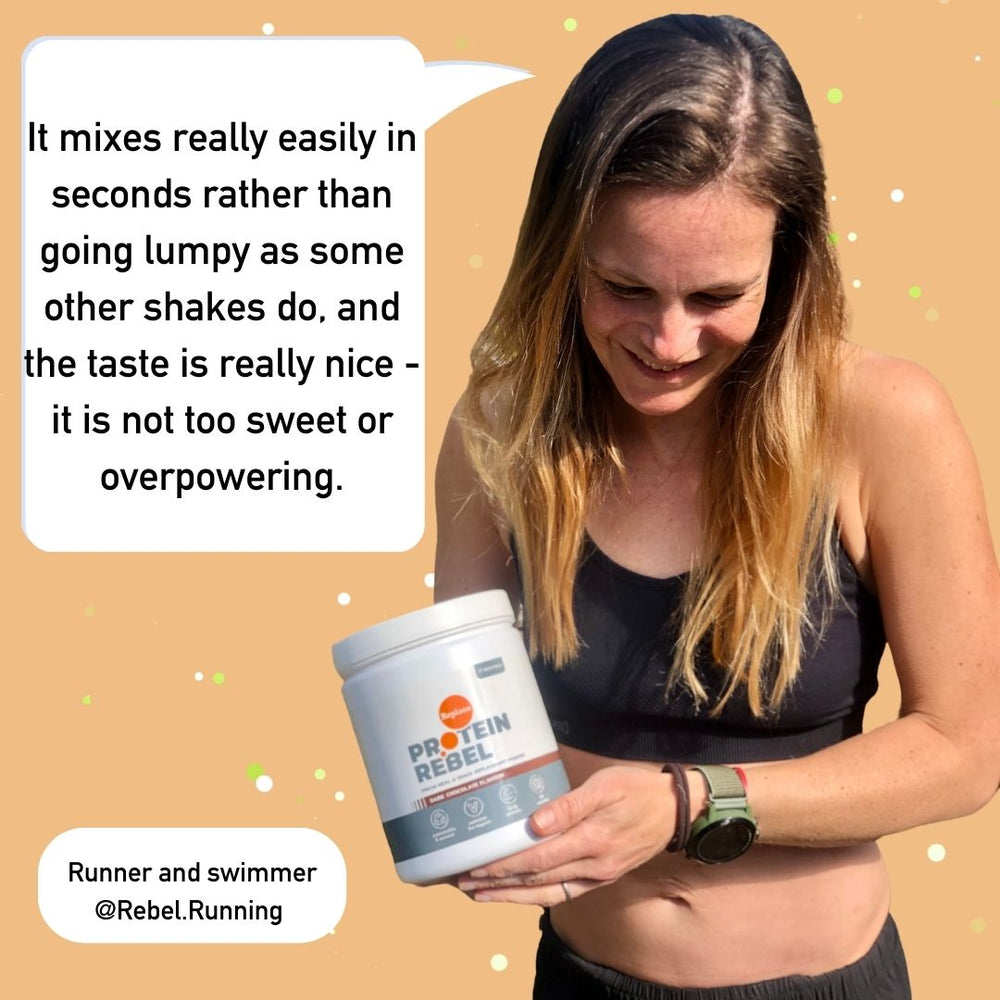Everything you want to know about using energy gels for running
Energy gels are both loved and hated in equal measure with many runners able to recollect bad experiences with a gel. But why are running gels needed at all? Are all gels the same and how should you use them to best fuel your running?
Why do you need energy gels?
When we run, we use carbohydrates and fat to fuel our bodies. We can store more energy as fat but It’s harder for our bodies to access it. Carbs will be where most of our energy comes from and is stored as glycogen. Once depleted, our bodies are running on empty and will quickly tire. You’ve probably heard the phrase ‘hitting the wall’, which is when our bodies have run out of glycogen stores. This is why it’s so important to keep refuelling our bodies during longer runners – anything over 1-1.5 hours. In fact, an endurance runner will have typically used up their glycogen stores within 60 to 120 minutes of racing, dependent on their pace.
Simple carbohydrates are best as a running fuel as they are easily digested and so get to work quickly. Foods high in fats, fibre and protein will not only be slow to energise you, but could lead to digestive problems as they’ll sit in your stomach.
Comprised of simple sugars, energy gels can be easily taken on the move and have a gel-like consistency (but this varies). As most runners breath through their mouth it’s important that they are easy to swallow.
What are energy gels exactly?
Gels for energy come in all shapes and sizes, although the majority of energy gels are a combination of lab-made maltodextrin (‘malto’) and fructose with some flavouring, preservatives and perhaps some electrolytes and caffeine added. Electrolytes such as sodium, potassium, calcium and magnesium, are important for maintaining fluid balance so are crucial for runners, and caffeine can provide an added boost.
Maltodextrin is popular because it’s a very cheap starch that’s made from multiple sugars. It originates from corn, wheat, rice, potato or tapioca but has been highly processed. With a high glycaemic index (GI) rating (between 80 and 120), it’s released into the blood stream for our tissues to use as energy with the help of insulin so causes blood sugar spikes just like glucose does. Fructose, on the other hand, is a single sugar which is metabolised by the liver, where it is converted into energy sources for the body through a process that does not require insulin. The idea is that as maltodextrin and fructose use different pathways in the body, by using both together it’s possible to consume more carbs per hour in comparison to energy from a single sugar source.
Increasingly, there are malto-fructose energy gel alternatives coming to market, mainly in response to runners finding many of these lab-made energy gels unpleasant to consume and hard to digest. Fructose, for example, can cause abdominal discomfort in up to 40 per cent of the population and maltodextrin has been linked to intestinal inflammation. Natural energy gels are becoming an increasingly popular choice.
Natural energy gels
Natural energy gels focus on using natural rather than artificial ingredients to fuel exercise, and often have a minimal ingredient list, leaving out the preservatives, flavourings and added sweeteners.
The benefits of natural running gels are that they tend to be gentler on the stomach, have a more pleasant taste and will naturally contain a range of minerals and compounds to support your overall health.
Some of the most common natural energy gel brands use honey. Honey energy gels are fairly common in the UK with honey being so easily sourced, but being 40% fructose, it’s high FODMAP. Those following a low FODMAP diet or who suffer with IBS should therefore consider limiting their intake of honey. And although honey provides high carbohydrates, it contains few naturally occurring electrolytes and so you would need to take electrolytes on top of your honey gels.
Chia seed energy gels are another option and as they provide both carbs and natural electrolytes, they have an advantage over honey gels. However, there are two big disadvantages to chia gels. The first is that they aren’t very high in carbs with one of the most popular chia brands providing gels that contain just 11g of carbs per pack. This is less than half the number of carbs in your typical running energy gel. Secondly, some chia gels require preparation – filling with water, shaking and leaving for 10 minutes - they aren’t simply ready to go when you need them. And once prepared they are only usable for 24 hours, meaning you need to be very clear about your nutrition strategy so that you prepare and use the right amount of energy gels every time you go running.
Pure maple syrup is a natural running fuel that has been used in Canada for a number of years but has only recently been introduced to the U.K. by Protein Rebel (Maple Ignite). Like honey and chia, it’s all-natural, however it has the advantage of being high in carbs with a number of naturally occurring electrolytes (potassium, calcium, magnesium). As the glycaemic index of maple syrup is estimated to be 54, this makes it a low to medium GI food and so those suffering with IBS shouldn’t suffer with stomach issues after consuming it. Maple syrup also naturally contains high levels of manganese, riboflavin, oligosaccharides, amino acids, organic acids, and phenolic compounds. These trace nutrients and compounds can provide a range of health benefits.
How do you choose an energy gel for running?
When determining which running gel to buy, whether it’s fuel for a half marathon, fuel for a marathon, fuel for an ultramarathon or simply fuel for a long Sunday run, it’s important to consider a number of factors:
- Carbohydrates per gel. Typically, runners should look to consume 40g-60g of carbohydrates an hour when running for more than an hour, however some runners will look to consume over 60g carbs when running for longer distances. Elite mountain runners even consume as much as 120g carbs per hour although the gut would need to be well-trained in order to digest this much. Knowing your carb per hour requirement means you can determine how many gels you may need. If the gel only provides 11g carbs, for instance, this would mean you’d have to consume at least 4 per hour. However, a gel with 20g of carbs would mean you’d need to consume half this number.
- Stomach feel. Malto-fructose gels aren’t always that well tolerated by the stomach leading to cramping, bloating and the urgent need to go to the toilet. It’s therefore important to choose an energy gel that’s gentle on the gut and you should try it out under race conditions to make sure your stomach can handle it. For those who can’t easily tolerate gluten, also check the energy gel is gluten-free.
- Taste and texture. Let’s face it, a lot of running gels don’t taste great and have a strange, wallpaper paste mouth feel. As you will be consuming a number of gels in races, you need to consume them readily and not put them off because they taste horrible. Natural gels will tend to have a more pleasant taste and texture, especially maple syrup which is just thicker than water.
- Electrolytes. If you’re wanting your gel to provide electrolytes as well as carbohydrates then look for a gel with sodium as well as potassium, calcium and/or magnesium. Consuming a mix of electrolytes rather than just sodium is preferable and will prove more effective at keeping you hydrated (alongside your fluids).
- Caffeine. Caffeine is often used before and during exercise to boost performance by improving alertness and reaction time, in addition to reducing the perceived exertion rate (e.g. the amount of pain you’re in). If you respond well to caffeine, having it incorporated into some of your gels may be a consideration. However, not everyone responds well to caffeine and so it should be avoided if it causes any negative reactions.
- Ease of opening and carrying. You don’t want to be battling with opening your gel in the middle of a race. You need to feel confident you can get into it quickly so test the ease of opening. Plus, how easy are they to carry around? Can you fit the number of gels you need in your pockets/ race vest or are some gels just too big and bulky?
- Ingredients. Are you happy to consume running gels with artificial ingredients or would you prefer to use natural running gels? Knowing your running gel is not only giving you energy (and potentially electrolytes), but the added nutrients are boosting your health, may persuade you to go natural.
- Environment. Does your energy gel help the environment in any way in terms of the ingredients and/or packaging? For instance, maple syrup supports a forest of maple trees, which not only supports wildlife but sequesters carbon. Also, does the packaging include a tag to reduce litter? This little tag means you can open the gel while keeping both the top and bottom sections together.
- Customer reviews and awards. What are other runners saying about the gel and has it won any industry awards?
- Price. This is always an important consideration but remember that the cheapest gels are unlikely to be made with the best quality ingredients. Maltodextrin-based gels are super cheap to make with a single gel costly just a few pence to produce. On the other hand, high quality natural ingredients will always cost more so it’s important to balance quality with price.
What’s the best energy gel for running?
Runners need to choose an endurance gel that provides a noticeable energy boost, delivers the right amount of carbs (and electrolytes if not supplementing separately), is tasty and is gentle on the stomach, avoiding any GI distress.
Maple Ignite provides all of this and more, which is why it’s the best rated energy gel in the U.K.
Women’s Running Magazine awarded Maple Ignite ‘Best Value Energy Gel’ and ‘Best Vegan Food’ and Men’s Fitness Magazine crowned Maple Ignite the ‘Best Energy Gel’.
Made from Quality Grade A maple syrup and sea salt, it provides 24g carbs per gel and natural electrolytes and is tasty, smooth and very easy to digest, making it the perfect vegan energy gel for runners.
Top tips for fuelling with energy gels
Once you’ve chosen the right running gel for you, you need to put together a plan of how you plan to fuel during your long run. Here are some top tips.
- Don’t try a new energy gel on race day. Stick to what you know.
- Consider taking a running gel 15 mins before the start of a run/race to give you a boost from the start. A gel won’t work immediately but will take anything from 3-15 minutes to be absorbed.
- Work out when you will take your gels during your run – some runners take them based on distance e.g. every 5km and others take them after a length of time e.g. every 30 minutes. It needs to be easy to remember and don’t be afraid to give yourself reminders such as setting an alert on your watch or writing on each gel the time you need to take it.
- Never put off taking a gel as this will have a knock-on effect on your performance.
- Figure out your hydration plan alongside your fuelling plan as both need to work together. Some runners choose to fuel and hydrate at the same time and malto-fructose gel brands will recommend this to assist in the digestion process. Maple Ignite doesn’t needs water to help digestion so you have more flexibility with when you take on fluids.
Final word
Using energy gels for endurance running can provide you with the vital fuel needed to keep going over long distances. However, it’s important to choose your energy gel wisely, taking into account everything from the amount of carbohydrates through to ease of opening. The right choice could make the difference between a DNF and a PB!
See this summary video below on all things gel...
